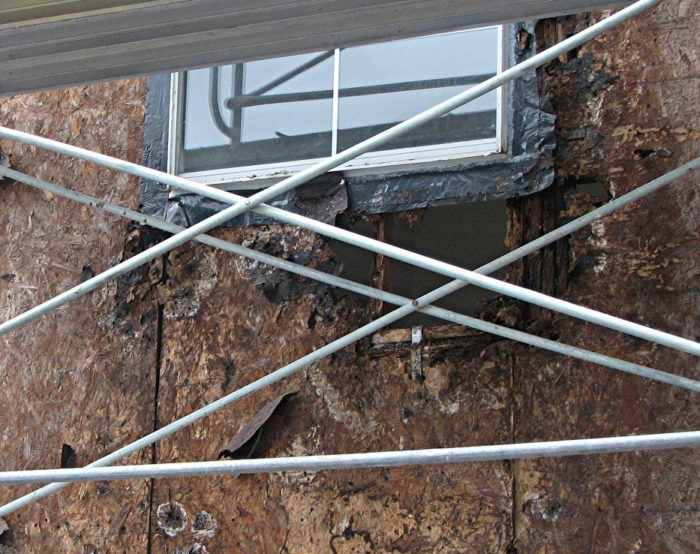
Image Credit: Photo with pipe staging: Will Smith — Rot under window: Mark Parlee (MP) — Splashback: Fairhope Farm — No kickout: MP — Missing step flashing: MP — Missing deck flashing: Everflashing — Ice dam: Ecduzitgood — Solar vapor drive: MP — Exfiltration: FHB
Contractors who specialize in repairing rotten walls won’t run out of work any time soon. The epidemic of wall-rot problems that began more than 20 years ago shows no signs of abating. In fact, wet-wall specialists are often called to investigate problems in developments where most of the homes have rotting walls — and in some cases, these homes are only six years old.
You may be wondering, what does this topic have to do with green construction? The answer is simple: if a six-year-old house requires $40,000 of repairs because the walls have turned to mush, then the house wasn’t very green — because rebuilding the house has an environmental impact.
Some people have called this an EIFS crisis, or a stucco crisis, or a leaky condo crisis. But wall rot isn’t restricted to homes with just one kind of siding or one kind of sheathing; nor is it restricted to condominiums.
This isn’t just an OSB crisis. Admittedly, OSB rots very quickly. Because of the speed at which it rots, Mark Parlee, a builder in Iowa who provided many of the photos shown here, calls OSB wall sheathing “vertical mulch.” But plenty of walls with plywood sheathing and board sheathing have also turned to oatmeal. It just takes a little longer with plywood or boards than it does with OSB.
This isn’t just a stucco crisis. While it’s true that some types of siding are more forgiving than others — vinyl siding is the safest siding, while stucco and adhered manufactured stone are the riskiest — choosing the right siding won’t be enough to keep you out of trouble, especially if your windows aren’t flashed properly.
Scared? You should be
If you’re a builder, and you still think that siding keeps walls dry, study the photos…
Weekly Newsletter
Get building science and energy efficiency advice, plus special offers, in your inbox.

This article is only available to GBA Prime Members
Sign up for a free trial and get instant access to this article as well as GBA’s complete library of premium articles and construction details.
Start Free TrialAlready a member? Log in





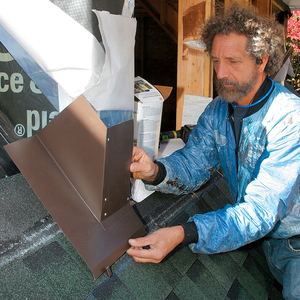
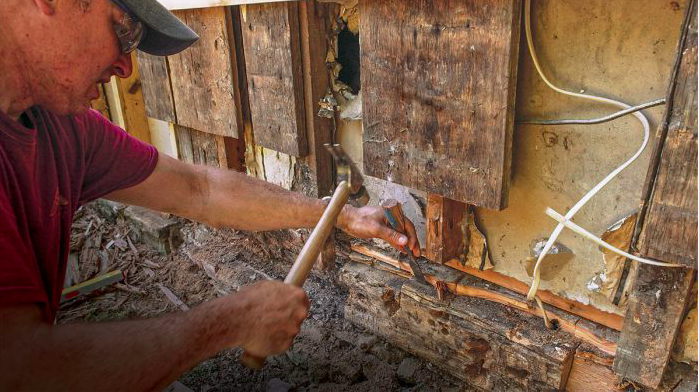
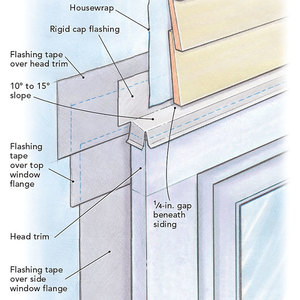
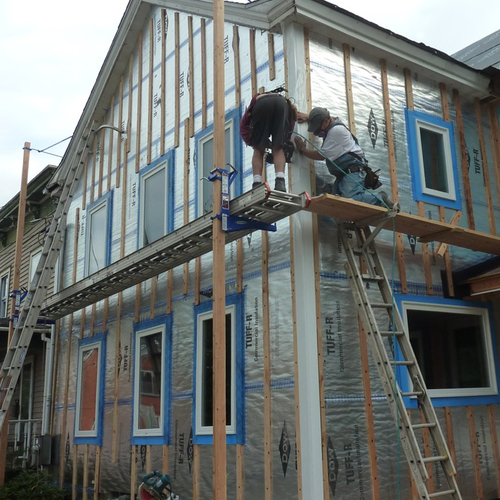






25 Comments
wet walls
Martin
I was just looking over the site and came across this:
https://www.greenbuildingadvisor.com/blogs/dept/energy-solutions/few-product-highlights-greenbuild
The wood fiber insulation reminds me of the “insul sheathing” we used to use when I first started construction when I was young, clear back in 76.
This was the fiber board wall sheathing, some of it impregnated some not, I hated it all. We, in the summer, were down to just cutoffs, no shirts, and sweating like crazy. After you sheeted the wall and cut out the openings the dust this stuff left made you look like you had just rolled around in the dirt, kind of felt like it too. Did I mention I hated this stuff.
Anyway fast forward to my moisture consulting days. I find this product to be some of the best in holding up to moisture. Not the continual wetting but almost. If the wetting does not exceed the drying, and the moisture is not trapped as in behind house wrap, this stuff does a good job of storing the moisture and releasing it at a dryer time.
Solar Vapor Drive
Martin, I am still curious about Mark Parlee's Photo of "Solar Vapor Drive"...
Are you (or Mark) sure that the cause was Solar Vapor Drive ?
I thought one of the "Elements" of Solar Vapor Drive was air conditioning.
The "failure photo" looks to be the exterior wall of a Garage.
Solar Vapor Drive
John
This degradation was over the entire home where brick was installed as the cladding. The failure here is two parts but both exacerbated by solar driven moisture. After the mortar is wetted and the sun shines this drives the moisture into the cavity due to the solar drive. If the squeeze out mortar is touching the WRB a capillary bond can/is formed. This moisture whether solar driven or just capillary travels and contacts the WRB and can go right through. If there are any surfactants picked up in this moisture they can further heighten the ability of capillarity through the WRB. The solar driven vapors also have the potential to pass through the WRB as that is what is claimed to be the strong point of some manufactures, its perm rate. I viewed one home that had a microbial action occurring in the cavity between the wall and brick. the vapor dive developed enough pressure to come through the insulation at the perimeter of the window, At least this air was a little filtered through the fiberglass insulation that was chinked in at this space.
Response to John Brooks
John,
I stand by my statement in the article that sheathing damage due to inward solar vapor drive is relatively rare. The failure in the photo that Mark Parlee has graciously shared is apparently due to a combination of factors, including both inward solar vapor drive and capillarity (aggravated by mortar droppings and an imperfect gap between the brick veneer and the WRB).
I'd be delighted to receive photos from GBA readers showing other examples of failures that were due in whole or in part to inward solar vapor drive. If I receive another photo that is a better example of a "classic" solar vapor drive problem, I'd be happy to use it to illustrate this article.
Solar Vapor Drive
In my experience, I do not come across very many (Exclusively Solar Vapor Drive) problems. When we do it usually/ always is in concert with another problem; this would be capillarity and solar driven moisture that doesn’t turn to vapor. I believe everything has to be set up almost perfectly to have the solar driven vapor problem create such an issue to where it will be a problem. I have only found one that I labeled this way and it was not on sides of the home only the west and six feet of the south exposure.
The home in the pictures in the article was built in 96 and torn down in 07. I did not do the initial consultation on this particular property however I was doing one on another home in the area and the same engineer was involved with me. When he saw my diagnosis he had me review his documentation on the one pictured in this article and we came up with the same diagnosis.
I think solar driven vapors are not all that rare but the damage from these vapors alone is not the tipping point; it has to work in concert with other damaging elements to be a problem.
Cherchez l’eau
The horror!
Great article. Dissappointing that folks out there are still building houses that rot after a few years, but just goes to show how good building is not as simple an endeavor as one might think.
Why? I mean, historically speaking.
These are truly horrifying images. But we have pretty much the same wind and rain we had in, say, 1925. And think of the number of 1925 houses that are still intact. You know they don't have rain screen siding or window detailing with high-tech sealants. How did they survive? Is it all that warm dry air leaking out of the inside, drying out the wet siding? Are energy waste and draftiness the keys to longevity in wood structures?
Five Fundamental Changes
Hi Gordon, this video may help answer your question
https://www.youtube.com/watch?feature=player_embedded&v=D_IrtDR3p0c
Response to Gordon Taylor
Gordon,
The link provided by John Brooks is very helpful, and of course Joe Lstiburek has nailed it.
For those who prefer to read about these factors rather than to watch a video, here are four points worth mentioning:
1. In 1925, most walls were uninsulated. With air on both sides of the sheathing, wet sheathing dried quickly.
2. All winter long, homes with uninsulated walls lose a lot of heat to the exterior. The heat (and air) flowing through and around the wall sheathing helps dry the sheathing.
3. The types of siding used in 1925 (for example, cedar clapboard) dried quickly. Clapboard has a little air behind it, and it is vapor-permeable. On the other hand, some modern claddings -- especially adhered manufactured stone and stucco with acrylic admixtures -- aren't very vapor permeable and trap moisture in a wall.
4. Board sheathing dries more quickly than OSB sheathing.
ventilation
I've read quite a bit about ventilated vs. unventilated cathedralized ceilings. I understand that the roof sheathing needs to be kept above the dew point with exterior rigid foam, sprayed underneath with closed cell foam, or allowed to dry with a ventilation channel between it and the permeable insulation.
Why isn't this approach more frequently recommended for walls as well? Is the roof more susceptible because hot moist air rises? Are condensation and trapped moisture not issues in walls?
I understand that you're focusing on the more common problem of exterior moisture damage to walls, but I've been curious about the differences in recommended roof and wall construction.
Response to Jason Miller
Jason,
The answer to your question is complicated.
First of all, building code requirements for roof and attic ventilation aren't based on research or scientific principles; they are a historic accident. (To read more about the topic, see How to Build an Insulated Cathedral Ceiling.)
Second, moisture accumulation and frost accumulation on the underside of roof sheathing in a vented attic is more visible than comparable issues on wall sheathing. Because the problem is visible, there has been more focus on the issue.
Third, because of the stack effect, a greater volume of air leaks through a typical ceiling than through a typical wall. This exfiltration carries interior moisture to the underside of the roof sheathing at a higher rate than does wall exfiltration.
Fourth, more and more building experts are recommending that walls include a ventilated air gap between the siding and the sheathing -- bringing wall construction recommendations in line with roof construction recommendations.
Fifth, a roof leak is more obvious than a wall leak. If bad flashing allows rain to enter your roof assembly, most homeowners notice the leak quickly. On the other hand, if bad flashing allows rain to enter your wall assembly, it may take years for the homeowners to notice the problem.
Fantastic blog
Please continue to cover this subject often and in depth.
Energy, building enclosures are my main interest and how to build multi century homes that are net zero , green structures.
Another worthy blog Martin.
Reply to John Brooks.
Ho-boy. Amazing video. Marred only by the stupidity of some of the comments. Thanks for sharing. And to Martin: Yeah, understood.
Thanks
Thanks, Martin. This is very helpful. I'll share it with my contractor!
Bad link
Hey Martin - JLC changed their archives - do you know the date of the Rose article you linked to in the cathedral ceiling piece?
Response to Dan Kolbert
Dan,
The article appeared in the October 2007 issue of JLC. Here is the correct link: Roof Ventilation Update.
Thanks for letting me know about the bad link. I have just made the necessary correction in the cathedral ceiling article.
Material Question
Just watched the Lstiburek vid. As an architect, I see so many problems with high tech materials. It's like cars. Now, only the certified mechanics with high tech equipment can work on them. Who in their right mind thinks that the average person is going to maintain a high tech house in the proper fashion? Heck, my cheapo vinyl-ville 2005 built house is already leaking at the windows and trim is rotting on the prevailing face. Because the advent of newer, less energy consuming and more efficiently made materials is here to stay, what is the real solution to utilizing these materials to avoid problems associated with mold. Proper flashing is probably number one, but even I will admit to not quite knowing every situation and condition. It doesn't help when you have 4 of every 5 "contractors" a guy working out of the back of their ruck. And who wants to spend money on the good ones when the next guy's bid is HALF! I hear a lot of "I can't see if from my kitchen," and "I'm not gonna live here for more than a few years." It's disgusting, but a fact of life, and something I think most of us are going to have to learn by experience in one way or another.
It just seems like an overwhelming issue to grasp on so many levels. Great post.
Response to Jason Burk
Jason,
Although you may feel overwhelmed, there is no substitute for study. You have finished four years of college and have obtained an advanced degree: you are an architect.
You wrote, "Proper flashing is probably number one, but even I will admit to not quite knowing every situation and condition." I'm sorry, Jason, but plenty of roofers and window installers who only have a high school education have learned what they need to know about flashing.
Since this is an essential part of your job, it's time to study up. Then go to a job site and apprentice yourself to an experienced window installer who understands flashing. You won't regret it.
Common problem with simple solutions
The only bigger shame than the amount of rot in "new" buildings is how easy it is to avoid these problems with a few simple decisions at design/specification time.
After dozens of rot investigations, it's clear to me that a these few items cause the majority of problems:
1) Poor construction quality & poor on-site quality control
2) Inadequate flashing (taping the house wrap to the window nail flange is NOT flashing)
3) Lack of functioning vent spaces behind the siding and/or roofing
4) Air-barriers/air-control-layers on the cold side of the assembly
5) Believing that any roofing, siding, wrap, or tape is (and will always be) perfectly waterproof
It's hard to find a rotten building that has gotten these things right.
Poorly applied SPF will cause wall rot to!
See: http://landing.newsinc.com/shared/video.html?freewheel=91060&sitesection=WTIC_hom_non_fro&VID=23903508
With all the rain this past
With all the rain this past decade I often work out of the "front of my ruck." And, have not built a rotting home yet... Though my day may be coming.... Have chopped lots of rot out. Plans need complete detail sheet. Most plan sets are severely lacking in details.
Response to Richard Beyer
Richard,
You allege that spray polyurethane foam can cause wall rot, but the link you provided does not support your contention. The link goes to a news story about a Connecticut man who complains of headaches after spray foam was installed in his crawl space.
The news story you linked to has nothing to do with wall rot.
Build It Like You Would A Shower
When you stop and think about it, using OSB as exterior sheathing is as stupid as tiling over drywall in a shower. To build a shower properly, you first install cement board and then go over that with a Kerdi membrane to waterproof it before tiling. This way any moisture that makes it past the grout can't cause any damage.
Why are we not 'waterproofing' the exterior of our homes, which are exposed to similar conditions as the inside of a shower.
A few years back, I had to replace a number of rotted trim boards on my 70 year old home. I 'oil' primed and 'latex' painted all 6 sides of the new wood, including any cuts I made. I even primed & painted over all of the nail heads after I installed it. That wood will not need to be replaced for 100+ years, if ever!
This isn't rocket science. Exposed wood rots. Exposed 'Engineered' wood rots even quicker. Even if it is covered in 'House Wrap', 'Glad Wrap' or 'Plastic Wrap' (AKA vinyl siding).
What if we painted/waterproofed all engineered wood on all 6 sides prior to installing? The wood never needs to dry out if we prevent water from soaking into it in the first place, right?
Even fence installers recommend waterproofing a new wood fence every few years if you want to double or triple it's lifespan.
Better yet, maybe we should eliminate the use of engineered wood completely and use cement board covered with Kerdi membrane on the outside of our homes. Hmmm... I kind of like that idea.
Ahhh but that doesn't fit in with our desire to use the cheapest construction materials available and then act all surprised when they don't last more than 20 years.
Rotting Walls?
Martin:
It is most interesting that you referred to 1925 houses to explain the lack of rot in older homes, as I would interpret this as a respiratory or at the very least an action of transpiration - a lot in common with almost everything on this planet.
Would or could that, possibly indicate your willingness to reflect; provide an opening for all of us to posit that there is exist a brief opportunity to investigate structural systems coupled with insulative products and building concepts/practices that could/would improve the R-value and at the same time allow environmentally efficient permeability/transpiration (vapour movement no matter how you slice it!).
Dare I suggest that it "COULD" include the phrase: breath-ability? And that it might may possibly prove to be the more ideal in context to both "Rot" & " ENERGY-EFFICIENCY", and move beyond the now presently more 'SOCIALLY, COMMERCIALLY & INDUSTRIALLY' "POPULAR" concept of "ENVIRONMENTALLY -EXCLUSIVE" approaches such as 'PASSIFHAUS' design/detail?
Might someone like: Robert Riversong, Meror Krayenhoff, Nadir Khalili, Robert Easton, Bill Steen, Bruce King, the dreamers/creators of 'Zap City', the millennium of unnamed innovators of globally diverse climatic/environmental locations referred to by Bernard Rudofsky in Prodigious Builders, or the multitudes of us that have been exploring/experimenting with and extolling the virtues of a truly green and breathable structure during the last millenniums, centuries and decades, [with our very lives] might be/are/could - 'we' - be on to something? Could it be that in spite of the relevantly recent creation of a hierarchy/deity of 'scientific specialists' (a little ancient Egyptian to me- JANE JACOBS) , this could/may at the very least provide an opportunity to; without exclusion or economic/political/religious bullpucky delve into the realm of 'environmentally appropriate' (with all the small E's and large 'E's' included) provide the opportunity of our ultimate survival ---for at least a few more millennium!!!!
Martin ---, Please, these are just questions/inquiry's in regards to your ?stance?.
These questions/suggestions do not disregard professional detailing, building design nor building trades/skills or their integrity or competence if executed proficiently .
Nor do these questions dismiss/disregard your own deep commitment and hard work on these pertinent issues. In fact they are based on your ability to respond from both a non-biased and curious mind set -you know the one that one keeps getting us all into trouble!
with respect and regards, smalld
Response to Rhaud Macdonald
Rhaud,
You wrote, "Please, these are just questions/inquiry's in regards to your stance?"
I'm not sure what your questions are, but I would be happy to entertain them if you post them on this page. If one of your questions is, "Can vapor-open walls be durable?" the answer is, of course, "Yes."
I have often stated that there are many ways to build a durable wall. Some vapor-permeable walls are very durable; so are some vapor-impermeable walls.
However, vapor permeability alone does not guarantee durability. Plenty of straw-bale walls have begun to rot due to splashback problems. Vapor-permeable wall can work -- but you still need to get all of the details right.
Log in or become a member to post a comment.
Sign up Log in